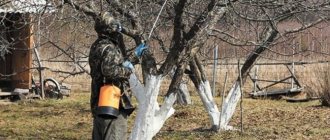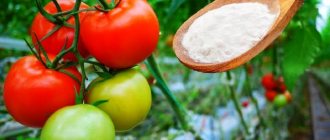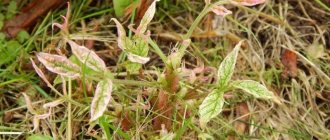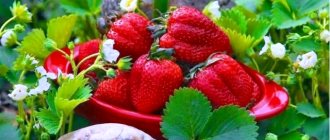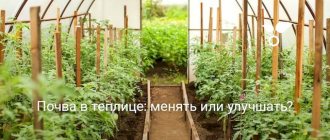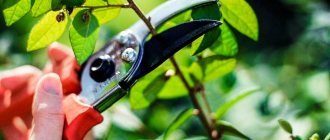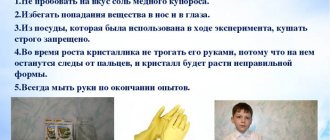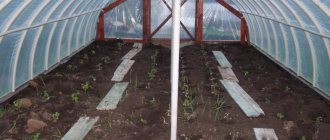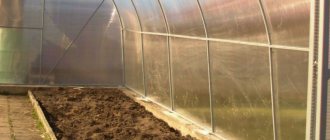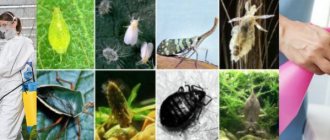An experienced gardener knows well that treating the garden from pests in the fall of 2021 is the key to a healthy and rich harvest next season.
Have you ever wondered where pests come from in the autumn garden? They do not fly from Africa in the spring, but spend the winter in fallen leaves, in bark cracks or in the ground. Many climb deep; mole crickets, for example, burrow as much as two meters. But many parasites can be deprived of a cozy home for the winter. Therefore, you need to start treating pests in the fall.
When and why is treatment carried out?
Treatment of the garden in the fall against pests and diseases begins when the trees and shrubs lose their leaves. This time occurs at the end of September - beginning of October. For activities, choose a dry, non-rainy day, before early frosts.
The main tasks of autumn treatment: to free trees and shrubs from parasites and their larvae, pathogens, small rodents, and also to preserve plants from the cold. Rake weeds, fallen leaves, and cut branches uphill, collect them and burn them outside the property.
Often insects lay larvae on the lower surface of the leaf, so it is advisable not to bury the foliage in the ground, then you will simplify their task. You should also not leave leaves and straw as a layer of mulch, so as not to attract mice for wintering. Dig up the circles of soil around the trunk well to a depth of 15–20 cm to get rid of pests and their caterpillars overwintering in the soil.
Do this procedure carefully, use a rake so as not to injure the roots of the plantings.
August
August is the period of fruit growth and the beginning of harvest. This month, fruit rots begin to appear, and scab continues to spread. Among the pests that spoil the fruits are the second and third generations of apple moth caterpillars, aphids and mites, and scale insects.
Control measures during this period are the same as in June, only treatments must be carried out taking into account the fact that the fruits after them can be harvested no earlier than after 20 - 30 days, and for grapes - after a month.
September
September is the time of fruit ripening. During this period, if necessary, treatments against scab and fruit rot are carried out. You can use “Chorus” (3 g per 10 liters of water). But it is necessary to take into account the waiting period - the time during which the amount of pesticide residues in fruits is reduced to a level that is safe for consumer health.
October
After the leaves fall, to prevent fungal diseases, it is recommended to re-treat the garden with a 1% solution of copper sulfate (100 g per 10 liters of water). The solution must be prepared in plastic, glass or enamel containers. It is necessary to process not only the plants themselves, but also their trunk circles, using 10 liters per 100 sq. m. m.
If trees are heavily damaged by lichens, during this period the trunks are cleared of their thalli and treated with a 3% solution of ferrous sulfate.
How to treat your garden with fungicides in the fall
Preventive fungicidal treatment of the garden can be carried out a little later, but also before the onset of frost. Use one of the following copper-based drugs: HOM, OxyHOM, Ordan, Abiga-Pik or industrial products based on other active ingredients (difenoconazole, epoxiconazole, propiconazole): Discor, Raek, Racurs, Forecast, Skor, Agromedicine.
Before use, carefully dissolve all preparations in water according to the instructions, and when carrying out the procedure, make sure that the solution gets not only onto the crown and trunk of the tree, but also onto the root zone, because there may be spores of pathogenic fungi.
A urea (urea) solution is perfect as a preventative against certain diseases of trees and shrubs, for example, purple spot or scab. To prepare it, 500-700 g of the drug is diluted in 10 liters of water and the crops are also sprayed after all the leaves fly off, but no later than the end of October. This treatment will not only protect the garden from diseases next year, but will also fertilize the soil.
- The most dangerous garden diseases - photos, descriptions and control measures in tables
What are the most common diseases of garden trees and shrubs, and what measures should be taken to cure them? We have collected all the information about this for you.
Whitewashing plant trunks
Whitewashing the trunks of trees and shrubs will protect the tree from insects and pathogens. Already laid eggs are burned out using whitewashing. In addition, disinfected trunks tolerate frost more easily.
Before starting the activity, lay a cloth around the trees. Use a scraper to free the tree from old bark and moss. Disinfect the surface, treat scratches and cracks on the trunk with garden varnish.
Apply whitewash with a wide brush in a couple of layers to a height of up to one and a half meters. Acrylic or water-based paints are sometimes used as whitewash. Specialized formulations are commercially available. But it’s no wonder to make the mixture yourself. To do this you will need slaked lime, copper sulfate, glue or clay for binding and water.
By adding carbolic acid to the mixture, you protect the garden from hares and rodents.
The optimal time for nitrogen irrigation is late autumn
Spraying the garden with a highly concentrated composition of nitrogen fertilizer, necessary for the prevention and elimination of garden parasites, should be carried out during the second stage of leaf fall or after it. Usually this is November, but the procedure will have to be at the beginning or end of the month, depending on the difference in climatic latitudes.
Treatment of garden trees with urea in an earlier period threatens the trees with burns and premature loss of leaves, which will affect their resistance to frost or insufficient filling of nutrients.
A dry and windless day is suitable for the spraying process. The procedure in such weather will have a greater effect.
In late autumn, in order to prepare 6-10 year old trees for neutralization, obvious signs of damage to the bark should be eliminated. To do this, the infected areas are cleaned manually using a metal brush. This will allow you to spray the affected area and rid the trees of insects that have gathered to spend the winter on them.
Moreover, even for discarded leaves affected by diseases, treatment with such urea is mandatory. Gardeners recommend subjecting it to the same thorough spraying. In the spring, the remains of overwintered leaves will become additional compost for fruit crops.
The urea irrigation solution for fertilizing is less concentrated than for disinfection purposes. To prepare a medicinal composition, up to 700 g of drug granules should be diluted in a 10 liter container with water.
Spraying the garden
Autumn sprinkling of shrubs and trees is carried out using three main liquids:
- urea,
- copper sulfate,
- iron sulfate.
Remember the protection technique:
- When working in the garden, wear a protective suit, gloves, and a respirator mask.
Buy a suitable garden sprayer based on the size of the area being treated. A 5% urea solution will rid the plantings of scab. The trunk and branches of the plant, as well as the soil around it, are subject to treatment against fungal disease. However, do not forget that urea contains nitrogen. This component initiates vegetation processes in trees.
To avoid exposing the plant to frostbite, spray the plantings with urea as close to frost as possible.
Finishing with a solution of iron sulfate (5–7%) will save the garden from moss and lichen, in which insects prefer to lay eggs. In addition, the mixture feeds the bark with iron, which helps in oxidative processes and prepares the plant for wintering.
Stone and pome crops, grapes, currants and gooseberries will be protected from many fungal diseases by a solution of copper sulfate. For greater effectiveness, lime is added to it and Bordeaux mixture is obtained.
Sprinkling trees with Bordeaux mixture is just right in the fall. This composition leaves burns on the leaves, for this reason its use in spring is dangerous. And in the fall, increase the dose of the solution without fear to 3%. Treatment with such a substance is the final stage in the autumn treatment of the site from diseases and pests.
Why treat trees in the fall?
Some summer residents do not spray, considering it useless. However, this is far from true; by carrying out timely preventive spraying in the fall, you can achieve the following goals:
- protect the plant from fungal infections;
- eliminate pests;
- protect the bark from dying. Many pests damage the bark, which leads to the process of wood decomposition beginning;
- increase the immunity of trees.
There are many reasons for spraying; experienced gardeners recommend treating the garden in the fall and spring immediately after the vegetation awakens. Thus, the plant will quickly move away from the dormant period and begin an active growing season.
How to treat trees and shrubs against pests in the fall
Spraying with urea
Take the well-known urea. It is a completely natural product, because it is found in the substance from which its name comes. For many harmful insects and fungal pathogens, this is a terrible poison. If you spray tree branches with a strong solution, they will not tolerate it. 200-300 g per bucket of water is quite enough, but if the trees suffered from scab, then the dose should be increased to 500 or even 700 g.
On a note! It is necessary to spray with urea no later than a month before persistent frosts. But if you water the ground under the trees with urea, you should water it generously; there will definitely be no harm. Excess nitrogen will leave with meltwater in the spring.
inkstone
Plants also need iron, so there will be no harm from iron sulfate. It is taken 200-300 g per bucket in a “clean” garden and 500 g in a diseased one. Big trouble will not happen from copper sulfate or Bordeaux mixture. After all, plants and humans also need copper in small doses, and plants simply cannot absorb excess.
In the spring, you will have to treat with a weaker solution, since after the buds open, a strong solution of vitriol can burn the green leaves. And they absorb iron and copper much more actively than bare branches.
Be careful! Before spraying with vitriol, be sure to wear a respirator, gloves and safety glasses.
Peculiarities of processing fruit trees in different regions
When cultivating a garden, it is important to take into account the characteristics of the region in which the summer resident lives.
For example, in the Krasnodar region you can spray trees with fungicides and insecticides as early as November, but in the Omsk region spraying will have to be completed in the first ten days of October.
Southern regions
For warm regions, spraying can be carried out until the end of November. Plants tolerate chemicals well. The procedure should be carried out only after the foliage has completely fallen from the branches.
Northern regions
For regions such as the Urals and Siberia, trees in the garden should be sprayed before the end of September or, at least, before the first ten days of October.
If the procedure was not completed in a timely manner before the first frost, it is postponed until early spring.
Moscow region
It is necessary to process after the crop has been harvested and the leaves have completely fallen. The most suitable period is considered to be mid-October.
Treatment with folk remedies
In the fall, when trees are treated with solutions against diseases and against parasites, you should remember that this is not all. Fruit trees need a few extra touches.
When preparing trunks for wintering, you should carefully inspect the tree for cracks. These areas will need to be sealed before the garden goes dormant. To prepare the putty solution, you need cow dung and straw. These components are mixed, and an excellent putty for damaged areas is obtained. This is the most widespread folk method. At the same time, it is a good protection for plants from cracking.
As for the spraying itself, there are several folk remedies that do not contain chemicals. But at the same time, they cope well with the task. Namely:
- pine needle extract;
- chamomile;
- wood ash.
Recipes
- Pine needle extract. You will need 2 tbsp. l per 10 liters of water. This solution protects trees from codling moths, moths and spider mites.
- Chamomile. To prepare the solution you will need to brew 1 kg of inflorescences in 10 liters of water. Then let it brew for 8 hours. Strain the solution through cheesecloth and dilute 1:3. By spraying with this mixture, the gardener will protect the garden from caterpillars and sucking parasites.
- Wood ash. This method provides prevention against late blight, aphids and as an indispensable feed for the root system. And to prepare the mixture you will need to take 0.5 kg of wood ash, sift it and add 10 liters of water. Boil and let sit for a day. Then treat the trees.
Properties of nitrogen fertilizer
Urea refers to concentrated nitrogen compounds, which should not be confused with nitrate, which is harmful to the garden crown. The composition is sold in the form of whitish granules without a pronounced odor. The crystals dissolve faster in water heated to +80°C, which makes it easier for the solution to be sprayed on the treated area. The hygroscopic composition should be stored in sealed boxes. Gardeners prefer spraying with urea in the fall not only for its 46% nitrogen concentration, but specifically for its intensive digestibility by garden crops that need to be saved from parasites.
When working with urea in the fall, remember:
- Ureas are organic fertilizers, but their composition is determined by mineral nitrogen-containing components;
- This is a fast-acting concentrate whose properties last for a long period;
- the fertilizer quickly erodes, therefore it requires irrigation directly of the soil, including greenhouse and greenhouse soil;
- the connection is effective in waterlogged areas;
- biologically active soil retains more nitrogen than alkaline or neutral soil environments;
- nitrogen-containing fertilizers are more effective and safe for the garden in the autumn, when the foliage does not burn if the concentration is disturbed;
- urea slows down the growing season, delaying flowering from spring frosts that are fatal to the ovary. This will have a fruitful effect on the preservation of early ripening varieties of plum, peach and apricot, and the fruit trees themselves preserve the developing buds;
- after spraying in the fall, garden pests are killed, and various diseases of garden crops are eliminated;
- after combining with earth, urea turns into ammonium carbonate;
- nitrogen-containing compounds do not accept compounds with chalk, lime and simple superphosphates;
- urea helps get rid of old stumps, causing them to quickly rot;
- Autumn treatment of the garden with nitrogen concentrate protects garden plants from early frosts.
We are constantly receiving letters in which amateur gardeners are worried that due to the cold summer this year there will be a poor harvest of potatoes, tomatoes, cucumbers, and other vegetables. Last year we published TIPS on this matter. But unfortunately, many did not listen, but some still applied. Here is a report from our reader, we would like to recommend biostimulants for plant growth that will help increase the yield by up to 50-70%.
We advise you to prepare in advance for the summer season, pay attention to this biological product. There are a lot of positive responses.
Chemicals
Here are some preparations for autumn treatment of shrubs against pests and diseases:
- Nitrafen. Strictly according to the instructions, as it is highly poisonous. This is from ticks, oviparous ticks and others that overwinter on the branches.
- Lime-Sulfur Decoction against wintering forms of fungal diseases and molds.
- Imidacloprid in various solutions is applied not only to the branches of bushes and shrubs, but also to thoroughly treat the entire soil around it. From pests (aphids, thrips).
- Thiamethoxam is another type of poison that works well both on the surface and in the soil. Use strictly according to instructions. From pests.
- Difenoconazole in various working concentrations, at a temperature not lower than +11, ideally destroys spores of various diseases.
- Penconazole will also cope well with diseases of berry plants; it is especially good for raspberries. You need to work with it before the onset of cold weather.
How to carry out autumn whitewashing of trees
Whitewashing is an effective and time-tested means of pest control. It is necessary to whiten the trunks before the onset of frost. The whitewashing process is carried out according to the following algorithm:
- slaked lime or special garden whitewash is used;
- the consistency of the solution should resemble thick sour cream in order to adhere well to the bark;
- trees and young seedlings must be whitened to a height of at least 1 meter;
- It is best to apply whitewash in several layers to make the procedure more effective.
Whitewashing also has a detrimental effect on most fungal diseases and eliminates larvae that may be hiding in the bark.
NOTE! Lime is effective against rodents. By whitening the trunks of young bushes and seedlings, you can avoid the attack of hares.
In what cases is it not advisable to treat fruit trees in the fall against diseases and pests?
In the fall, it is not recommended to spray the garden against diseases and pests if any tree or shrub bears fruit before the first frost.
Also you won't be able to spray at the end of November. Usually at this time there are night frosts, and spraying can be harmful.
When to treat trees in the fall of 2022 according to the lunar calendar from diseases and pests
For summer residents who cannot determine the appropriate period for spraying, you need to use the recommendations of the lunar calendar.
Organic (biological) drugs
The most effective preparations that should be used to treat fruit bushes in the fall:
- Aktofit, immediately after harvest and before cold weather, against all adult insects;
- Mikosan is good for sanitizing diseases of the surrounding soil and the bushes themselves before the onset of frost;
- Bisolbifit, it is used to treat mulch against diseases, before insulating berry fields with it, before snow falls;
- Fitosporin is used until the night temperature drops below +6, against diseases of strawberries and raspberries, as well as sea buckthorn and yoshta;
- Trichodermin is used to treat the soil against diseases and fungi, before applying mulching material to it, before frost;
Only correct and timely processing of shrubs in the fall guarantees a lot of tasty and healthy berries next summer, which is why you cannot delay with it.
Features of urea
Urea or urea refers to granular fertilizers; it contains about 46% nitrogen. The product is considered the most concentrated nitrogen fertilizer for the garden; it is also used for processing the vegetable garden. Some gardeners often confuse urea with saltpeter, which is dangerous for plant leaves.
Urea is produced in the form of crystals of white, yellowish shades, which have no odor and dissolve in water without problems. At temperatures above 80 degrees, the dissolution process occurs faster, and the product is perfectly distributed throughout all plants. The fertilizer itself does not absorb moisture well, so it is stored for a long time; for long-term storage, pack urea in containers.
Gardeners are attracted to urea not only for its high nitrogen content, but also for its ability to destroy pests very quickly, due to its good absorption by plants. After all, when it comes to parasites, every minute counts.
Once in the soil, urea reacts with bacteria and microorganisms that are in the soil. The first three days last a chemical reaction that promotes the conversion of urea into ammonium carbonate. Upon contact with air, the substance transforms into ammonia gas.
It is thanks to this feature that urea needs to be incorporated into the soil; the absence of this process will lead to the loss of most of its beneficial properties. Therefore, the granules that are scattered around the trees must be covered with soil (eight centimeters) to achieve the goal.
Is the domestic scolopendra dangerous for humans and how to get rid of the insect? Read useful information.
What does the dung beetle eat and why is the appearance of an insect in the garden dangerous? Read the answer at this address.
When working with urea, consider the following aspects:
- the substance acts immediately, its positive effect lasts for a long period of time;
- urea is classified as an organic compound, but experts classify it as a nitrogen-containing fertilizer;
- urea must be applied directly to the soil, the substance tends to quickly erode;
- the substance can be used in any soil, even in greenhouses;
- urea shows excellent results on well-moistened soil;
- in soil that has high biological activity, urea loses less nitrogen than in soil that is neutral and alkaline;
- urea is considered the safest nitrogen-containing fertilizer, which does not burn the leaves in the summer (even if the dosage is exceeded);
- treating the garden with urea is useful not only in the fall (to protect against frost and pests), but also in the spring (when buds form, the substance destroys all pests and diseases);
- also in the spring, the substance can slow down the growing season, the buds ripen later, which protects the plants from spring frosts;
- It is impossible to get rid of stumps using urea; treating them will only speed up the process of decay;
- It is strictly forbidden to mix urea with other fertilizers (chalk, lime and others).
Protection against gray rot
If gray rot has been noticed on fruit trees, you should immediately begin to fight it. Since this disease leads to a decrease in yield, and subsequently to the loss of the tree itself.
The most effective way to destroy fungal diseases is sulfur. By spraying a tree with it, you can be sure that it will not suffer from a burn. When preparing the solution, you must strictly follow the dosage: add 30 grams of sulfur to 10 liters of water. This solution will help defeat the main enemy of all fruit trees and bushes.
You may also find the following materials useful:
- Rules for successfully planting roses in the fall: favorable days according to the lunar calendar 2022
- Lunar calendar for indoor flowers for 2022
- Planting raspberries in 2022 in the fall before winter, timing, favorable days, proper care
- Planting tulips in 2022 in the fall before winter according to the lunar calendar
- How to care for hydrangeas in the fall in September 2022, what to do with the plant
And a little about the author’s secrets
Have you ever experienced unbearable joint pain? And you know firsthand what it is:
- inability to move easily and comfortably;
- discomfort when going up and down stairs;
- unpleasant crunching, clicking not of your own accord;
- pain during or after exercise;
- inflammation in the joints and swelling;
- causeless and sometimes unbearable aching pain in the joints.
Now answer the question: are you satisfied with this? Can such pain be tolerated? How much money have you already wasted on ineffective treatment? That's right - it's time to end this! Do you agree? That is why we decided to publish an exclusive interview with Oleg Gazmanov, in which he revealed the secrets of getting rid of joint pain, arthritis and arthrosis.
Ammonium nitrate is also called ammonium nitrate. By its nature, it is a salt of nitric acid, one of the most common representatives of the family of mineral fertilizers. By using ammonium nitrate on time and in optimal dosages, you can ensure that the flowers on your site will bloom longer and more luxuriantly, and the fruits of shrubs and fruit trees will become much tastier. The use of ammonium nitrate is even said to extend the shelf life of late varieties of apples, and roses grown in soil rich in ammonium nitrate last longer in vases.
Tree preparation
As soon as the weather outside begins to change at the end of summer or at the beginning of autumn - it becomes cold, insects rush to hide in secluded places and survive the winter frosts there. Most often, pests hide in the bark, fallen leaves, and also in the soil. It is at this stage that spraying trees will help destroy pests and prevent their reappearance.
Disinfection spraying protects garden crops from pests. It also prevents the development of pathogenic processes - fungal and bacterial infections. On the bark of untreated trees, pathogenic microorganisms develop more often. This negatively affects their vegetative development and then fruiting.
Before carrying out disinfection work, garden crops need to be prepared. The list of preparatory measures depends on the age of the plant. If the tree is more than 6 years old, then before carrying out the appropriate measures it is necessary to “scrape” the bark with a metal brush. The surface of the trunk must be freed from lichens and moss, in which harmful insects prefer to hide.
The remaining preparation rules apply to garden plants of any age:
- Collection of plant debris, fallen leaves, fruit remains, and their subsequent destruction.
- Digging the soil with the introduction of mineral or organic fertilizers, as well as chemicals intended to combat pests and rodents.
- Pruning damaged, broken, dead branches. Before pruning, it is important to study the rules and basics of this event, since for each type of garden plant the algorithm of actions is individual.
- Cleaning dead bark particles.
What biological products can be used for soil in the fall?
Gardeners mainly use Metarizin, created on the basis of a special entomopathogenic fungus Metarizium. It acts specifically on soil-dwelling pests and most wintering insects at any stage of development - it parasitizes them, causing diseases and death of pests.
The drug has a long-term systemic effect; even if some pests survive in the spring, they are greatly weakened and do not produce offspring.
To apply Metarizin to the soil in the fall, you can mix it with any (both mineral and organic) fertilizers when digging, or spray the soil with a liquid solution. (The maximum effect is obtained when applied to moist soil). It is recommended to use regularly, at least 2-4 times in one season.
This biopesticide is environmentally friendly, does not accumulate in plant cells, and is not addictive, although it acts for a long time. In addition to its main activity, it has a growth-stimulating and immune effect on plants due to humic components. You can look for its cheaper analogues - Biodischarge, Mikorad INSEKTO, Entotsid.
This, of course, is not the entire list of means for autumn tillage. Any owner of a site has his own opinion on the choice of one method or another, because in the end the result is important - obtaining a site without parasitic pests that methodically devour our plantings in the absence of appropriate control.
Preparing the garden for treatment with urea
Before winter, insects look for cozy places to hide from frost. Such places are considered to be fallen leaves and tree bark. That is why garden spraying is carried out in late autumn. Such manipulations will protect trees from the invasion of scab, putrefactive diseases, and other misfortunes. As a result of garden treatment, the vegetative process is accelerated, the proliferation of pathogenic microorganisms stops or significantly slows down.
To obtain the desired result, you need to properly prepare the plants. The process is carried out in several stages, taking into account the age of the plantings:
How to spray grapes in autumn
In the fall, after harvesting, it is necessary to inspect the bushes for disease damage and the presence of pests. Autumn processing guarantees a good harvest next year. One of the diseases of grapes is mildew. Gray or yellow spots of an oily nature are signs of this disease. If you notice these signs, treat with the following drugs: Kartotsid, Efal, Amistar, Strobi . Oidium is another grape disease. If you smell rotten fish, it means that the grapes have contracted this disease. In this case, it is recommended to spray with colloidal sulfur. The solution is prepared as follows: take five grams of sulfur for 4 liters of water, another drug is potassium permanganate, and five grams of potassium for ten liters of water. You can also buy drugs in the store - Fundazol, Falcon . If there are no signs of damage, preventive treatment is carried out.
Of the pests, grapes are most often affected by grape budworm and mite. Rovekurt helps from her . For preventive spraying - Fundazol, Polychom.
The timing of spraying grapes depends on the varieties. Early varieties are sprayed already in September. Late ripening varieties - at the end of October. After processing, the grapes are pruned and covered for the winter.
Preparing the garden for processing
Beginning gardeners often ask the question: “Where to start processing trees and shrubs?”
The to-do list is quite extensive. With the onset of autumn, the following types of work must be performed in the garden:
- it is necessary to remove the carrion. Fruits and berries that are scattered around the trunk or under bushes must not only be removed, but taken outside the garden and disposed of;
- leaves from under trees and shrubs can serve as a refuge for various parasites and garden pests. They should be removed and disposed of;
- Lichens and peeling bark need to be removed. Larvae find refuge under the bark, and butterflies lay eggs there. In the spring, caterpillars will appear and feed on leaves and flowers;
- it is necessary to cut out extra branches, which take away food and also complicate the gardener’s work with each tree.
Carrion removal
It is necessary to remove all fruits and berries that have fallen to the ground. Unused crops rot on the ground and provide the best food for a wide variety of parasitic organisms.
Cleaning is performed in the following sequence.
- They choose a specific tree or bush and roll up a garden cart.
- They collect all the fallen fruits and berries and put them in the back.
- After clearing the area under one plant, they move on to another and carefully select the carrion.
- After filling the body, the collected cargo is transported outside the garden.
- For disposal, dig a hole with a volume of up to 1 m³.
- Throw grass or hay at the bottom of the hole. Layer thickness up to 10 cm.
- Pour the carrion into the pit in layers. Try not to make thick layers. It is advisable to have no more than 7...8 cm.
- Sprinkle slaked lime on top. Some gardeners recommend using quicklime; it will extinguish itself if it is in a humid environment. The quantity is calculated as follows: for 1 kg of fruits and berries you need 10 g of lime.
- Having poured 3...4 layers, spread weeds or hay. This arrangement will allow aerobic bacteria to exist in the pit, as well as earthworms; they smell the carrion and will gather in the pit. You can also throw in two or three dozen worms to activate processing.
- For the winter, the pit is only lightly sprinkled with a layer of up to 5...7 cm of soil. Moisture will collect here, and the rotting process will occur faster.
In the recommendations of foreign authors one can find a proposal to add nitrogen fertilizers to such a disposal pit. The fruits and berries contain all the necessary components to obtain high-quality humus in the future. But the addition of ammonium nitrate or urea will not be superfluous; you can add it in an amount of 3...5 kg/m³.
A lot of rotten apples, what to spray on an apple tree in the fall
Rotting of apples directly on the branches is caused by a disease called moniliosis or garden rot. First, a brown spot appears on the fruit. At first it is small in size, then spreads throughout the entire fruit. The gray dots are fungal spores. It is carried by insects and birds. Wind is also a carrier. Fungal spores appear only in that area of the apple where there is no protective waxy layer in the form of a peel. If the apple is scratched, its top layer is damaged, creating favorable conditions for the penetration of the fungus. Thin-skinned varieties make it easier for this disease to spread. Varieties with thick skin successfully counteract the disease and only a small amount of prevention effort is required. Having noticed this disease on your apple trees, you need to take control measures.
The first step is to collect all the rotten apples that are lying on the ground.
They are not suitable for compost heaps as they contribute to the spread of disease. All rotting crops must be collected and burned. There are various drugs on sale to combat garden rot - Fundazol, Skor, Mikosan, Fitodoctor, Bordeaux mixture 3%.
It is very difficult to get rid of garden rot in one go. The disease can be transferred from neighboring areas by wind and birds.
If you decide to plant new apple tree seedlings, choose varieties that are resistant to this disease: Banana, Liberty, Welsey, Darunok, Yubilyar, etc.
A lot of wormy apples, what to spray on an apple tree in the fall
Another disaster befalls the apple orchard - this is an invasion of apple moths. The gray butterfly is invisible on the bark of trees and begins its flight when the apple tree blooms.
She lays her eggs on the bark of trees or in flowers. The caterpillars that emerge from the eggs crawl inside the fruit and eat it. To avoid being affected by this pest, control measures must be carried out year-round. One of these measures is to treat apple trees in the fall, when the leaves have fallen. The first step is to collect fallen leaves and damaged apples. Dig up the soil around the apple tree. If you put on a hunting belt in the spring, take it off, as insects have accumulated on it during the summer season. Whitewashing trees in the fall is a measure that does not prevent the appearance of pests.
In addition to the fact that codling moths eat the pulp of apples from the inside, they are carriers of fungal spores and bacteria, which subsequently cause apple rot.
To prevent the appearance of pests, spraying with chemical preparations is carried out in the fall:
- karbofos;
- trichlorometaphos;
- rovikurt;
- benzophosphate.
